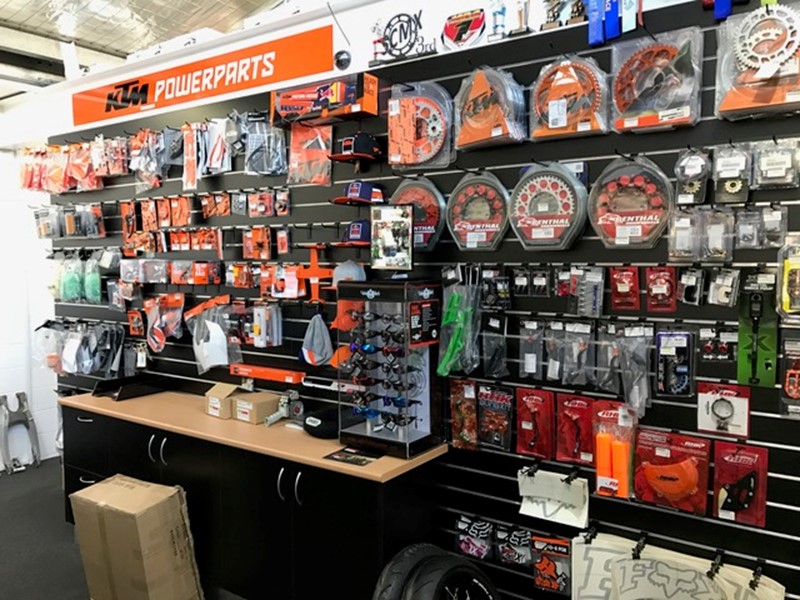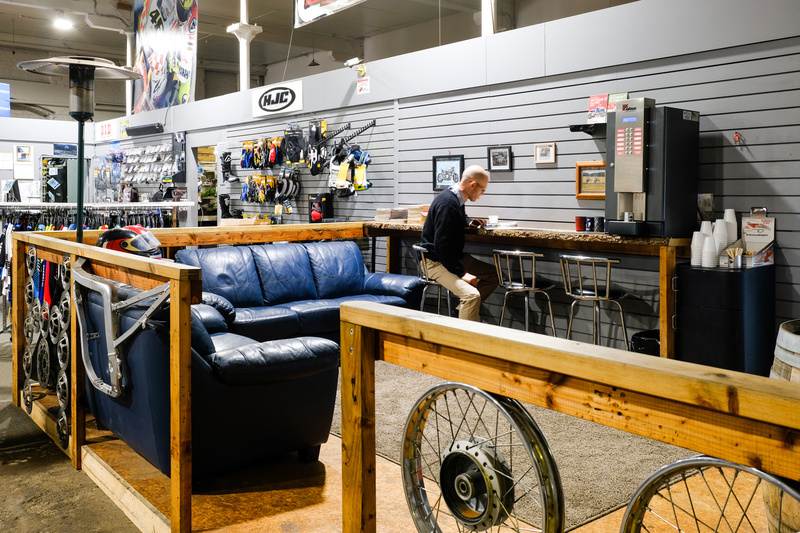Discover Affordable Costs on Motocross Parts NZ for Every Bike
Discover Affordable Costs on Motocross Parts NZ for Every Bike
Blog Article
Comprehending the Important Parts of a Motorbike: A Comprehensive Overview for Enthusiasts
For motorcycle enthusiasts looking to boost their riding experience and ensure their bikes run smoothly, comprehending the important elements of a motorbike is vital. Each component, from the engine's detailed functions to the vital duty of the stopping devices, not only affects efficiency yet likewise safety and security and comfort. This overview will go through the fundamental parts that every motorcyclist should know with, making it possible for informed options in both maintenance and potential upgrades. As we start this exploration, one must ask: how does each component engage to produce the seamless trip every fanatic looks for?
Engine Components

The camshaft plays a vital role in managing the timing of the engine's shutoffs, guaranteeing the specific opening and closing required for effective gas and air intake, in addition to exhaust expulsion. This timing is crucial to keeping optimal engine efficiency and efficiency. In addition, the carburetor or fuel shot system, depending upon the bike model, is liable for mixing air with gas in the appropriate ratio for burning.
The air conditioning system, either air or liquid-based, works to preserve the engine's temperature level within functional limitations, avoiding overheating and making certain durability - motorcycle parts nz. Each element, carefully designed and integrated, contributes to the smooth operation of the engine, specifying the motorbike's power outcome and overall efficiency
Transmission System
Important to the bike's capability, the transmission system guarantees effective power transfer from the engine to the wheels. This system consists of several essential elements, consisting of the clutch, gearbox, and final drive, each playing an essential role in equating the engine's power right into motion. The clutch, generally run by a hand bar, serves to engage and disengage the engine from the transmission, enabling for smooth gear adjustments and controlled acceleration.
The transmission, often referred to as the transmission proper, contains a set of gears that riders can manually shift through to readjust the bike's rate and torque outcome. These gears are organized in a sequence that enables the motorcycle to increase efficiently and maintain optimum engine efficiency across numerous rates. Many motorcycles make use of a consecutive transmission, needing the motorcyclist to move gears in a predetermined order.
Braking Devices
While recognizing the transmission system is crucial to harnessing a motorcycle's power, equally important is the ability to regulate and stop that power effectively, which is where braking devices come right into play. Brakes are critical for safety and security and performance, providing the rider with the required control to navigate various terrains and conditions. Normally, bikes feature two sorts of braking systems: disc brakes and drum brakes.
Disc brakes are much more widespread in contemporary motorcycles as a result of their premium performance. They contain a brake disc, caliper, and pads. When triggered, the caliper presses the brake pads against the rotating disc, transforming kinetic energy right into heat, consequently slowing down the wheel. This system offers much better heat dissipation, consistent efficiency, and improved quiting power, particularly in wet conditions.
On the other hand, drum brakes, though less usual, are still found in some motorbikes. They function by pressing brake shoes versus the internal surface of a drum connected to the wheel. While normally less efficient in warm dissipation and quiting power, drum brakes are easier and more cost-efficient.
Comprehending these stopping systems' subtleties enables motorcyclists to maintain their motorbikes correctly and appreciate the engineering that ensures risk-free and efficient stopping.
Suspension and Guiding
Suspension and steering systems are crucial elements that significantly influence a motorcycle's handling and adventure comfort. The suspension system, including forks at the front and shock absorbers at the rear, absorbs road irregularities, boosting stability and control. Front forks, commonly telescopic or upside down, compress and rebound to alleviate effects, while rear shock absorbers maintain tire contact with the road, vital for traction and safety and security.
Guiding, focused around the handlebars, attaches the biker to the bike's directional control. The steering head bearings make sure smooth operation, allowing specific maneuverability. Proper alignment and upkeep of these bearings are crucial for foreseeable guiding feedback and decreasing biker fatigue.
The suspension's adjustability is an additional important element; preload, damping, and rebound settings permit personalization to suit numerous riding conditions and designs. This adaptability is necessary for maximizing performance, whether browsing city roads or dealing with rugged routes. Developments like digital suspension systems offer real-time changes, improving adventure high quality across varied terrains.

Electrical Systems
After making certain a smooth and regulated experience through reliable suspension and steering systems, focus turns to the electric systems, a critical facet of modern motorbikes. These systems play an essential function not just in starting the engine yet also in powering numerous elements that boost the functionality and security of the bike.
At the heart of a motorcycle's electrical system is the battery, which shops electric energy needed for beginning the engine and powering you could try this out auxiliary systems - motorcycle parts nz. The generator or generator, paired with the rectifier-regulator, ensures the battery stays charged while the motorbike functions, transforming power into electrical energy and maintaining voltage levels
The ignition system, one more important part, buy riding jacket is accountable for firing up the air-fuel blend in the engine's cylinders. Modern motorbikes usually make use of an electronic ignition system, offering better effectiveness and integrity compared to traditional systems.
Illumination systems, including headlights, tail lights, and indications, are additionally essential, ensuring presence and safety for the rider. Added digital elements such as sensors, control units, and displays add to sophisticated functions like fuel injection monitoring, anti-lock stopping systems (ABDOMINAL), and digital control panels, additionally improving the riding experience.
Conclusion
A comprehensive understanding of a motorbike's important parts, consisting of the engine, transmission system, braking devices, suspension, steering, and electric systems, is vital for lovers aiming to maximize efficiency, safety, and comfort. Proficiency of these elements enables informed choices regarding maintenance and upgrades, inevitably enhancing the riding experience. By incorporating this expertise, cyclists can guarantee their bikes operate at peak effectiveness and reliability, therefore taking full advantage of both satisfaction and longevity of their cars.
For bike enthusiasts looking to elevate their riding experience and ensure their bikes run efficiently, recognizing the important elements of a bike is paramount.Essential to the motorbike's capability, the transmission system ensures efficient power transfer from the engine to the wheels.While recognizing the transmission system is key to taking advantage of a motorbike's power, just as vital is the capacity to regulate and quit that power effectively, which is where braking mechanisms come right into play. Generally, motorbikes feature two types of braking systems: disc brakes and drum brakes.
A detailed understanding of a bike's bike helmet store crucial parts, consisting of the engine, transmission system, stopping systems, suspension, steering, and electrical systems, is important for lovers intending to enhance security, comfort, and efficiency.
Report this page